What is Thermometer Accuracy?
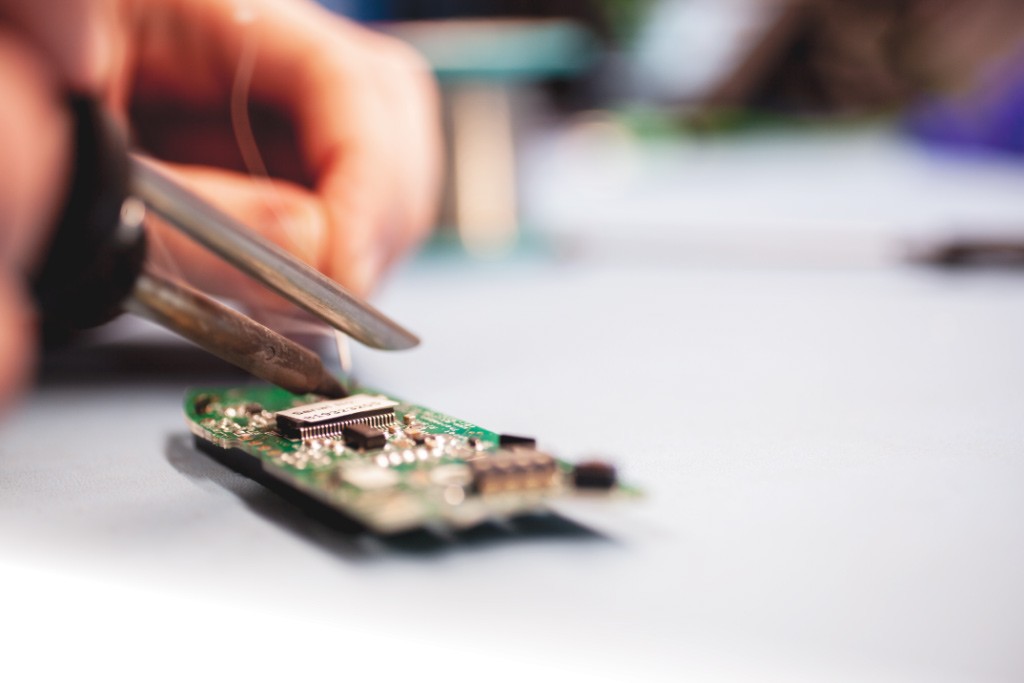
Any thermometer is only as good as how accurate it is, so choosing a thermometer with a good level of accuracy and ensuring it is regularly calibrated is essential for taking reliable readings.
The United Kingdom Accreditation Service (UKAS) provides a way for calibrated thermometers and their temperatures to be traceable to a national standard, thereby giving the user a guarantee of accuracy.
Traceability is characterised by several essential elements, including:
1. An unbroken chain of comparisons going back to stated references, usually a national or international standard (i.e. UKAS)
2. Measurement uncertainty. The uncertainty of measurement for each step in the traceability chain must be calculated or estimated according to agreed methods and must be stated so that an overall uncertainty for the whole chain may be calculated or estimated. (This is represented as a plus sign over a minus sign in front of a number (e.g. ± 0.5° C).
3. Documentation. Each step in the chain must be performed according to documented and generally acknowledged procedures, and the results must be recorded.
4. Competence. The laboratories or bodies performing one or more steps in the chain must supply evidence for their technical competence (e.g. by demonstrating that they are accredited). The calibration facilities at ETI are UKAS accredited calibration labs.
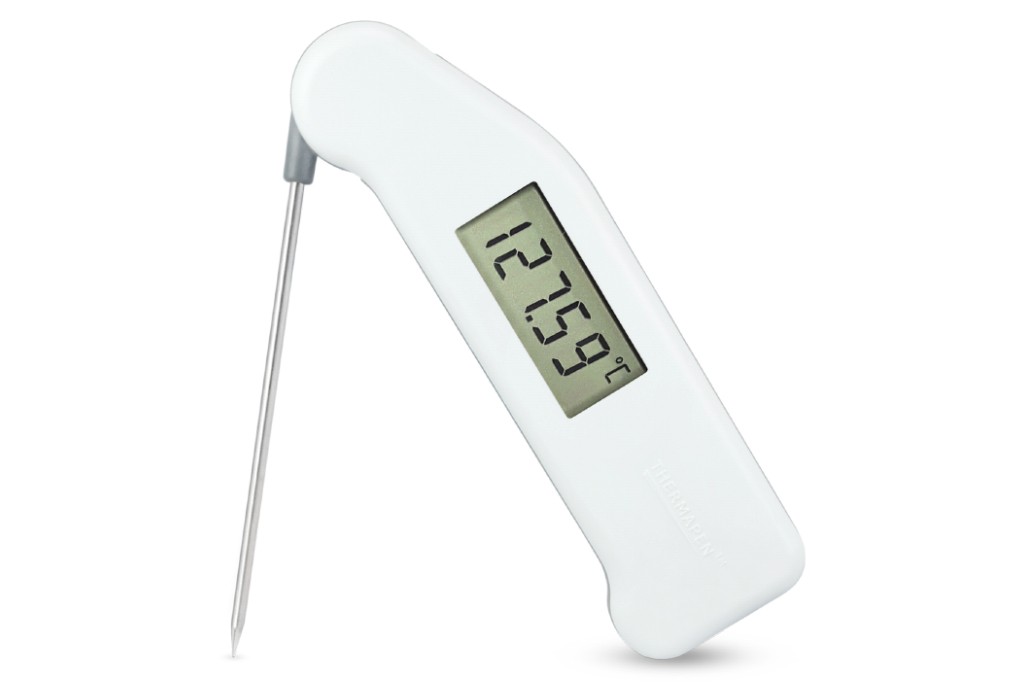
What is Drift?
Drift is the potential for instruments to lose accuracy over time, which is why thermometers must be calibrated regularly.
Electronic thermometers with computer circuitry can sometimes perform very complex calculations, factoring in things such as the effect of ambient temperature on the circuitry to determine a measurement with greater accuracy and reproducibility. But by separating the temperature probes from the meter, they also introduce the possibility of additional error.
With mechanical thermometers like liquid thermometers and dial thermometers, the display is controlled by the temperature sensor itself, the expansion of the liquid or bimetal coil. Dial thermometers need frequent weekly, if not daily recalibration, but they only need one calibration at a time.
Electronic thermometers, particularly ones with interchangeable probes, may only need to be calibrated once a year (depending on how often they’re used), but both the probes and the meter should be calibrated.
Creating a properly made ice bath
The easiest way to test the accuracy of any thermometer is in a properly made ice bath. If you do this carefully, your ice bath will be 0°C within ±0.1°C. If you are not careful, the ice bath can be off by several whole degrees (just a cup with ice water in it can be 12 or more degrees too high).
1. Step One: Fill with ice
Making a proper ice bath is all about keeping a proper ice-to-water ratio. Fill a vessel all the way to the top with ice. Crushed ice is preferred because there are fewer gaps between the ice, however cubed ice will also work fine.
2. Step Two: Add Water
Slowly add water to fill the spaces between the ice. Fill about 13mm below the top of the ice. Let the mixture sit for a minute or two to allow the temperature of the water to settle. If you see the ice starting to float off the bottom of the vessel, pour off some water and add more ice. Water below the ice will not be at 0°C.
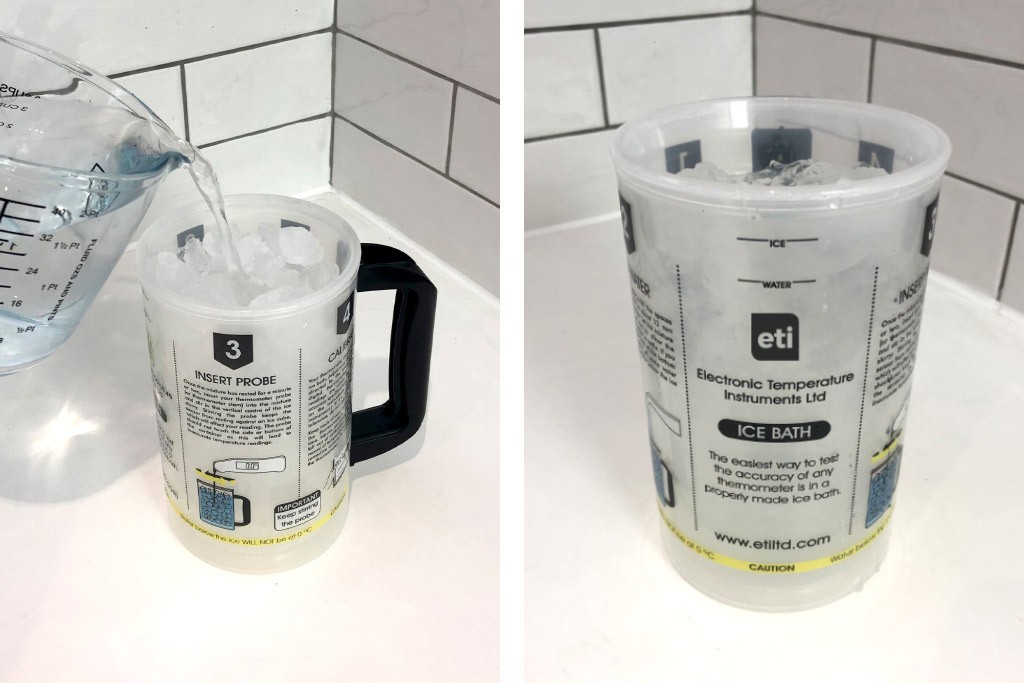
3. Step Three: Insert the Probe
Once the mixture has rested for a minute or two, insert your probe (or thermometer stem) into the mixture and stir in the vertical center of the ice slurry. Stirring the probe keeps the sensor from resting against an ice cube, which will affect your reading. Keep the probe tip away from the side walls and don’t allow it to rest against the bottom of the vessel as this will give you inaccurate temperature readings. If the thermometer has an extremely fast and sensitive needle tip, like the Thermapen, you MUST gently stir the probe or you will find colder and warmer spots in the ice bath. Stirring equilibrates the temperature throughout the vessel.
4. Step Four: Confirm Calibration
Your thermometer should read 0°C in the ice bath. Adjust your dial thermometer as directed by the manufacturer; however, before you attempt to adjust a digital, instant-read thermometer, check that the readings are within the manufacturers accuracy specifications (look for a ±°C on the documentation included with the instrument). If it’s within the specified tolerance, don’t adjust.
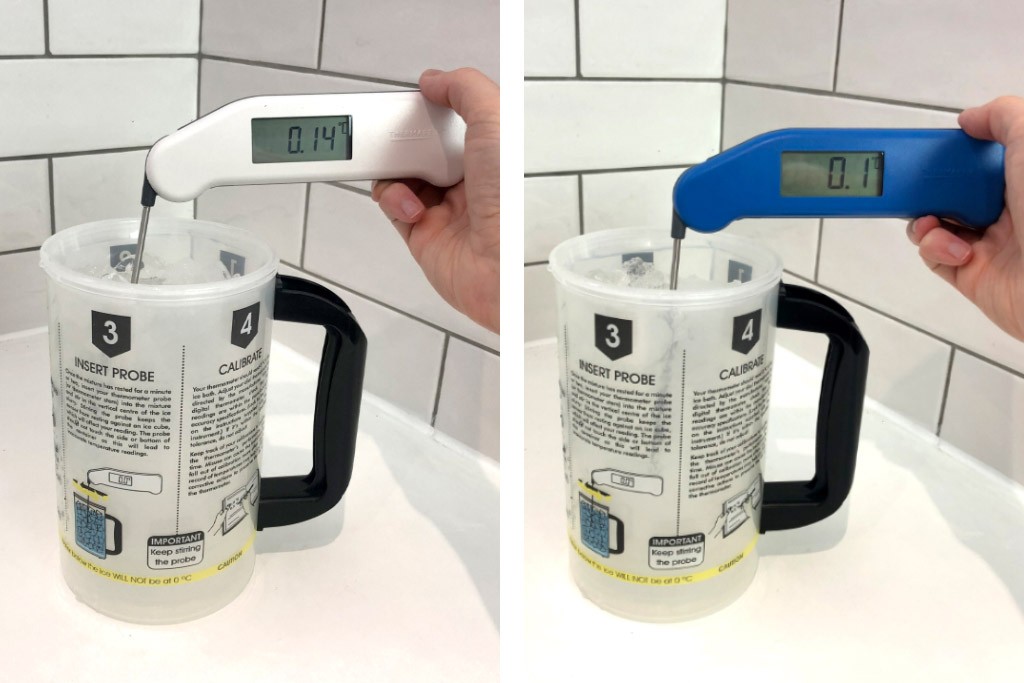
How to take measurements properly
An accurate and frequently calibrated thermometer is still only as reliable as its user. If measurements are not taken carefully and correctly, the results will still not be accurate.
Depending on the probe you are using, different thermometers will need to be inserted at different depths into the food to get an accurate reading. Thermometers with thermocouple probes such as a Thermapen only need to be inserted 3mm or more to gain an accurate reading, whereas other cooking thermometers may need over 12mm of immersion.
Different parts of a piece of meat will be at different temperatures during the cooking process. It is not unusual for the internal temperature of a large roast or turkey to vary by as much as 10 to 15°C throughout the meat or bird. Even a steak or a boneless chicken breast will show differences of many degrees as the tip of the thermometer probe moves from the surface toward the center of the piece, or from end to end.
Because the middle of the food takes the longest to cook, the temperature of solid food needs to be taken from the centre or thickest part. To take a reading, insert the probe and slowly move it towards the centre of the food. As you get closer towards the middle you will see the temperature begin to drop, and then rise again as you move past the core. Be sure to avoid any bones, fat or gristle. Remember, cooked food is only as safe as its lowest temperature, so spot checking is essential for larger foods. Insert the probe into several other places to ensure it has come to temperature throughout.
When taking the temperature of liquid foods such as jam or syrup it’s important to ensure they have come to temperature throughout. Stir the liquid before inserting the probe to ensure the heat has circulated.
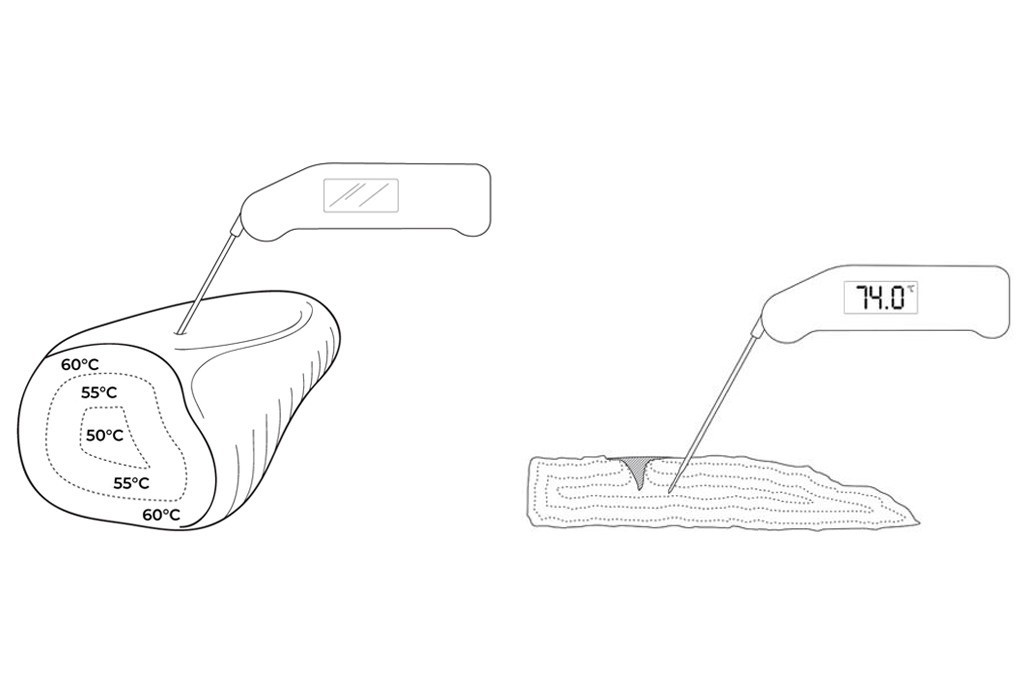
You might also like:
ETI Department Spotlight: Quality Assurance
Validating the Readings on an Infrared Thermometer Using an Ice Bath
ETI UKAS Temperature Calibration Services
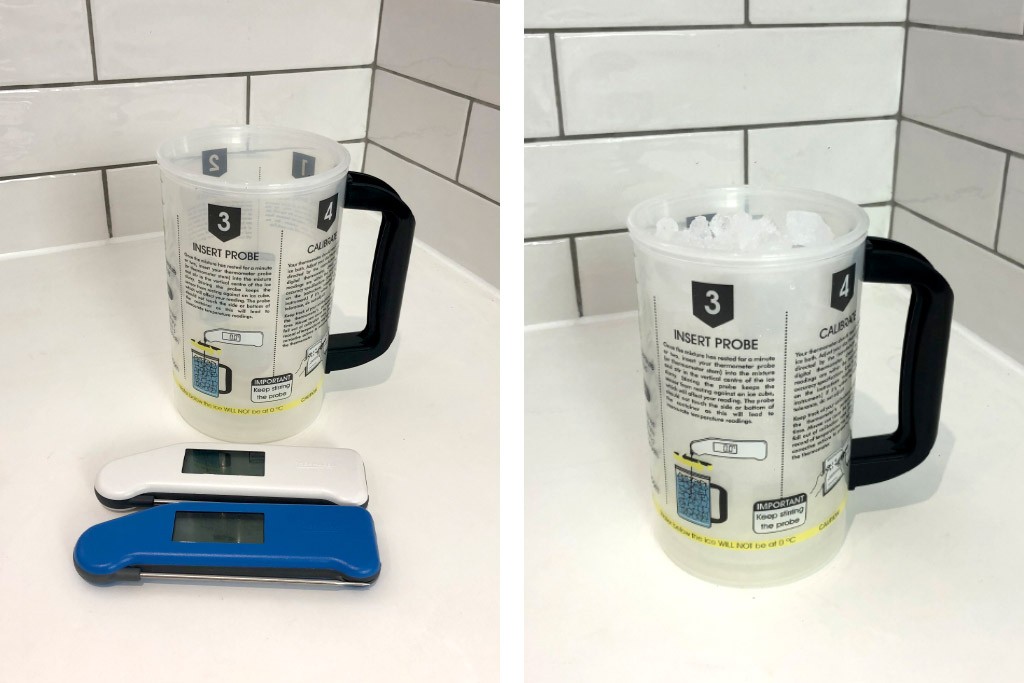
Such great info you have shared here. Thanks for sharing this with us.